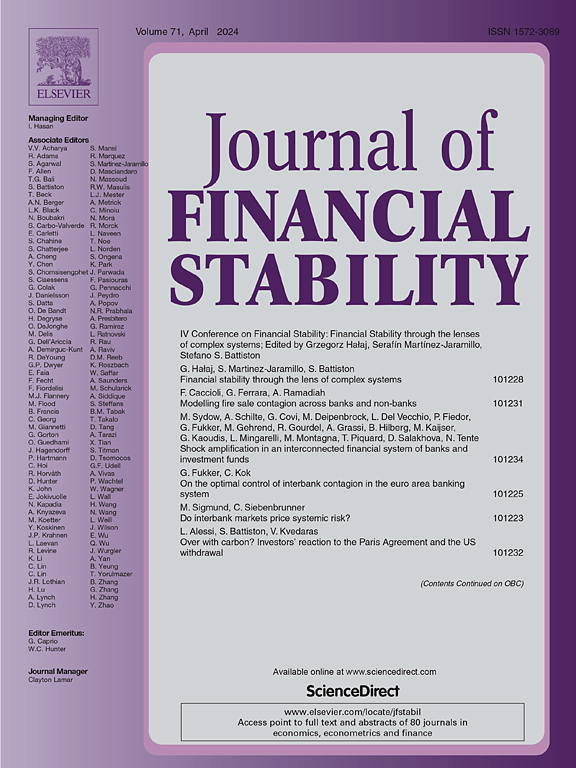设计信用利差驱动的宏观审慎规则
IF 4.2
2区 经济学
Q1 BUSINESS, FINANCE
引用次数: 0
摘要
宏观审慎政策的传统特点是对信贷变量作出反应的逆周期规则。在本文中,我们用附加指标(包括信用价差)扩充了这些规则。首先,我们通过显示信贷利差与信贷繁荣的相关性来实证评估信贷利差的相关性。然后,我们将该变量纳入具有金融摩擦的动态随机一般均衡(DSGE)模型。使用该模型,我们评估了宏观审慎措施在多大程度上也对信贷息差做出反应,可以改善福利,重点关注资本充足率(CRR)规则和贷款价值比(LTV)规则。我们发现,信贷息差对基于信贷供应的指标特别有用,而基于借款人的指标则更受益于对房价的额外反应。总体而言,增强规则通过降低产出波动性来提高福利,尽管这是以增加通胀波动性为代价的。最后,我们表明,在CRR的情况下,对信贷息差做出反应的福利收益对货币政策立场是稳健的,而对于LTV规则,它们取决于货币政策对通胀的反应程度。本文章由计算机程序翻译,如有差异,请以英文原文为准。
Designing credit-spread driven macroprudential rules
Macroprudential policy is traditionally characterized by countercyclical rules that respond to credit variables. In this paper, we augment these rules with additional indicators, including the credit spread. First, we empirically assess the relevance of the credit spread by showing its correlation with credit booms. Then, we incorporate this variable into a Dynamic Stochastic General Equilibrium (DSGE) model with financial frictions. Using the model, we evaluate the extent to which macroprudential measures that also respond to credit spreads can improve welfare, focusing on both a capital requirement ratio (CRR) rule and a loan-to-value ratio (LTV) rule. We find that credit spreads are particularly useful for credit supply-based measures, while borrower-based measures benefit more from an additional response to house prices. Overall, the augmented rules enhance welfare by reducing output volatility, although this comes at the cost of increased inflation volatility. Finally, we show that the welfare gains from responding to credit spreads are robust to the monetary policy stance in the case of the CRR, while for the LTV rule, they depend on the degree of monetary policy responsiveness to inflation.
求助全文
通过发布文献求助,成功后即可免费获取论文全文。
去求助
来源期刊

Journal of Financial Stability
Multiple-
CiteScore
7.70
自引率
9.30%
发文量
78
审稿时长
34 days
期刊介绍:
The Journal of Financial Stability provides an international forum for rigorous theoretical and empirical macro and micro economic and financial analysis of the causes, management, resolution and preventions of financial crises, including banking, securities market, payments and currency crises. The primary focus is on applied research that would be useful in affecting public policy with respect to financial stability. Thus, the Journal seeks to promote interaction among researchers, policy-makers and practitioners to identify potential risks to financial stability and develop means for preventing, mitigating or managing these risks both within and across countries.
 求助内容:
求助内容: 应助结果提醒方式:
应助结果提醒方式:


